 |
Thursday, December 19, 2024
December: A Day in the Life Of...Northeast Regional Fish and Wildlife Health Coordinator: Melanie Kunkel As the Northeast regional fish and wildlife health coordinator, my day-to-day work varies greatly! I work with 13 state fish and wildlife agencies in the... Category: Wildlife 411 |
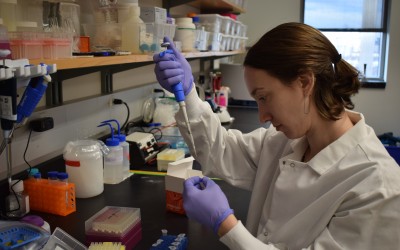 |
Wednesday, November 20, 2024
November: A Day in the Life Of...Research Associate: Alyssa Kaganer My role within the Cornell Wildlife Health Lab (CWHL) is a grab bag of all things related to molecular biology - meaning that no two days are ever alike, and I never do all the different parts of... Category: Wildlife 411 |
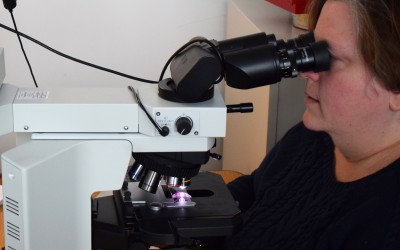 |
Wednesday, October 30, 2024
October: A Day in the Life Of...Wildlife Pathologist: Beth Buckles Ithaca may pride itself on being “gorges”, but in my opinion the best part of living in the Finger Lakes is Autumn! The changing leaves, crisp air, and fall sunshine make this the perfect time of... Category: Wildlife 411 |
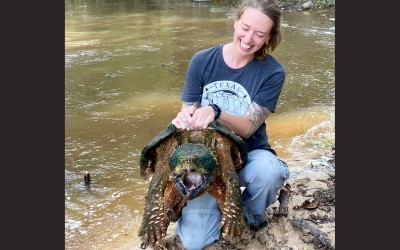 |
Tuesday, October 29, 2024
Meet Alfie –How One Turtle Created a Conservation ConnectionIn August of 2023, an alligator snapping turtle (Macrochelys temminckii) was pulled out of the Genesee River in upstate New York by US Fish and Wildlife Service (USFWS) biologists, who were seining (net fishing) for fish. They... Category: Wildlife 411 |
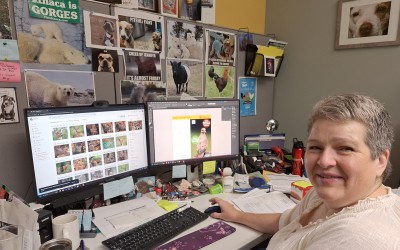 |
Monday, September 30, 2024
September: A Day in the Life Of...Program and Communications Coordinator: Jennifer Peaslee Cat herder, catch-all, and photo hog—I relate to all these terms and more. My position requires that I do and know a fair bit of everything to manage the administrative tasks... Category: Wildlife 411 |
 |
Tuesday, August 27, 2024
August: A Day in the Life Of...Research Veterinarian: Rachel Abbott I typically start my day by doing the NY Times puzzles to warm up my brain as I eat my breakfast. Then I head over to my desk by the window or into my office on campus to solve puzzles associated... Category: Wildlife 411 |
 |
Monday, July 29, 2024
July: A Day in the Life Of...Wildlife Veterinarian: Jenny Bloodgood Serving as the veterinarian for the CWHL keeps me on my toes, and July has been no exception! On a given day, I might be coordinating with our DEC or regional partners, working on a paper or... Category: Wildlife 411 |
 |
Wednesday, June 26, 2024
June: A Day in the Life Of...A Data Analyst: Nick Hollingshead Although my job title is “data analyst,” only a fraction of my time at the Cornell Wildlife Health Lab is spent analyzing data. I help people understand how to turn data into useful information and... Category: Wildlife 411 |
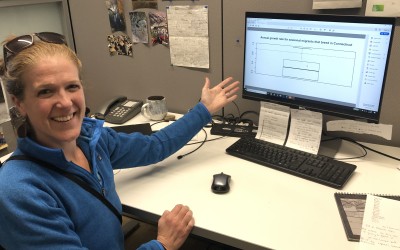 |
Monday, June 3, 2024
May: A Day in the Life Of...Mathematical Modeller: Brenda Hanley Wake up and go for the coffee. The first decision of the day is which mug to use. Choice 1: a mug celebrating math. Choice 2: a mug making good-natured fun of math. If we have a meeting at... Category: Wildlife 411 |
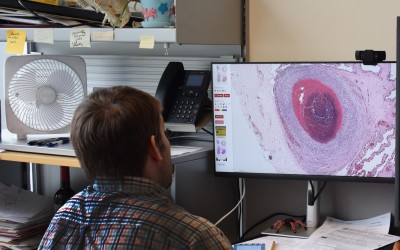 |
Monday, April 29, 2024
April: A Day in the Life of...A Wildlife Pathologist: Gavin Hitchener My role within the laboratory is multi-functional, and I serve many stakeholders, including the wildlife health laboratory and the anatomic pathology group. I also act as the director of the... Category: Wildlife 411 |
 |
Tuesday, April 9, 2024
What's on the Horizon for CWHL students?Ever wonder what happens with our students after they are done working/learning with the Cornell Wildlife Health Lab? Well, we keep in touch and follow their journey beyond CWHL. Here's a look at what a few of our wildlife students... Category: Wildlife 411 |
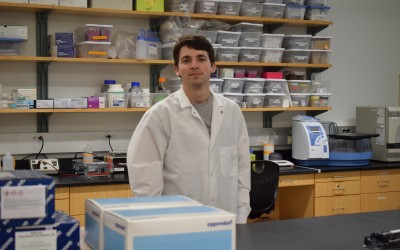 |
Tuesday, March 26, 2024
March: A Day In the Life of...A Research Technician: David Dayan As a former undergraduate researcher and now postgraduate research technician with the Cornell Wildlife Health Lab, I have mostly worked on a study of environmental contaminants in hunter-harvested... Category: Wildlife 411 |
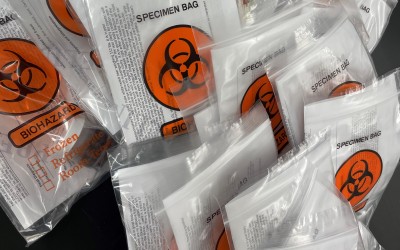 |
Thursday, February 29, 2024
February: A Day in the Life of...A Research Support Specialist: Melissa Fadden My role within the lab is a complex balancing act of time management, project and sample organization, and managing our case data stream. I guide incoming diagnostic case submissions,... Category: Wildlife 411 |
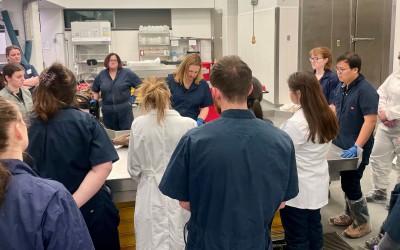 |
Tuesday, January 30, 2024
January: A Day in the Life of…A Wildlife Disease Ecologist: Krysten Schuler Hi everyone, we’re starting this monthly series “A Day in the Life of…” to give you a snapshot of the daily happenings of us at the Cornell Wildlife Health Lab (CWHL). Granted, not every... Category: Wildlife 411 |
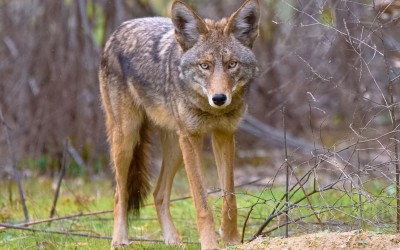 |
Monday, February 13, 2023
Weird & Wonderful Wildlife - The CoyoteThe coyote, Canis latrans, is not a large animal; people are surprised at their size once they see it in person. They are mid-sized members of the dog (canid) family, usually weighing no more than 45 lbs. and can easily be mistaken for... Category: Wildlife 411 |
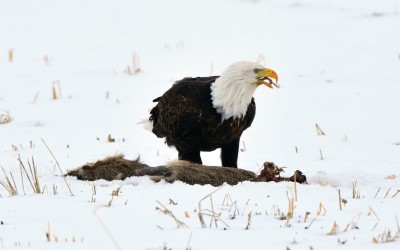 |
Tuesday, November 16, 2021
What You Leave Behind - Lead Ammo Risk to Wildlife SpeciesWhat's in that gut pile? A common practice for most big game hunters includes field-dressing harvested animals in the field. Yep, that means removing the internal organs - appropriately called the gut pile - and leaving it behind.... Category: Wildlife 411 |
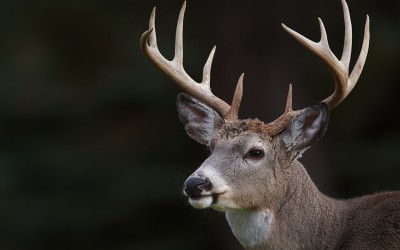 |
Monday, August 2, 2021
Hunter Harvest CWD Testing AvailableHunting season is approaching and the Animal Health Diagnostic Center is accepting hunter-harvested submissions for CWD testing for $68 per sample (deer head). Only NYS-harvested submissions are accepted at the AHDC, so if you... Category: Wildlife 411 |
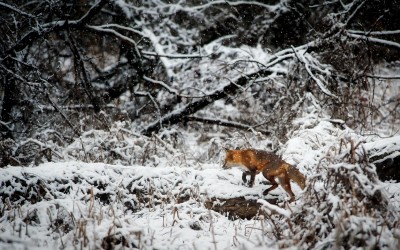 |
Wednesday, October 30, 2019
Wildlife's Winter Preppers and more!Leaves are turning (and falling) and the first frost has already hit….winter is right around the corner – seriously, it’s happening. Many wildlife species have been out and about ramping up their fat and food stores getting ready for the... Category: Wildlife 411 |
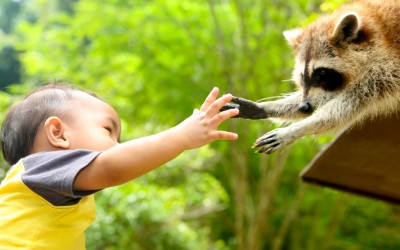 |
Friday, July 19, 2019
Killing Them with KindnessWe've all seen the news stories covering tragedies like the "rescued" baby bison that had to be euthanized thanks to human interference despite clear warnings, the baby dolphins mobbed at the beach by tourists desperate for selfies... Category: Wildlife 411 |
 |
Monday, June 17, 2019
Behind the Diagnosis Curtain: HistopathologySolving the mystery of wildlife mortality with diagnostics When the Cornell Wildlife Health Lab investigates mortalities in wildlife, our specially trained pathologists use diagnostic tools to crack the case . Our pathologists are... Category: Wildlife 411 |


